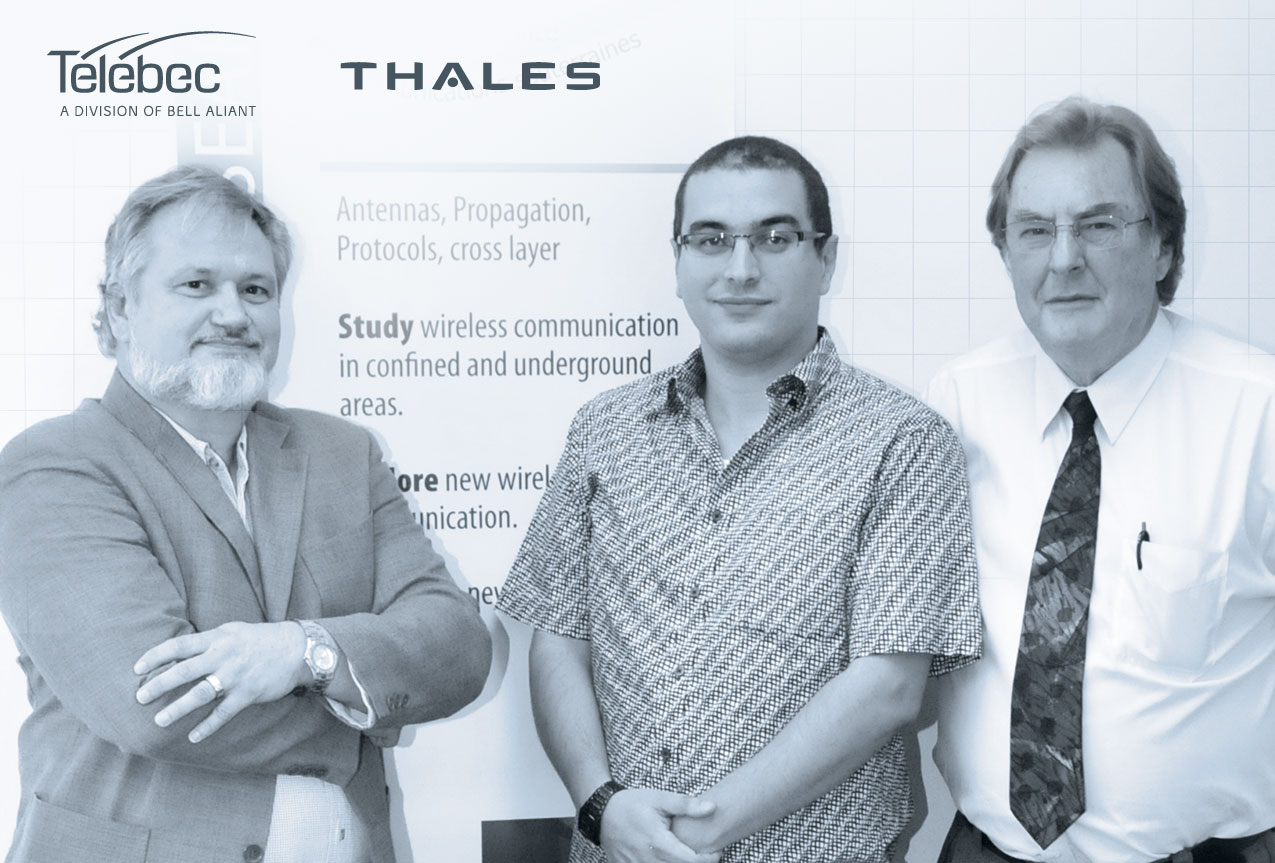Safety First: Increasing the Capabilities of Emergency Responders – and Those They Serve

(Left to Right): Pierre-André Bélanger, Dr. Nadir Hakem, and Dr. Gilles Delisle, all of UQAT.







SECURITY | SOFTWARE | WIRELESS
Prompt-Supported ICT Innovation Promises to Improve Public Safety


In August 2011, three women ventured out for a three-day hike through Alberta’s Peter Lougheed Provincial Park. When the hikers failed to return at their scheduled time, RCMP initiated a search and rescue mission. Following the deployment of three emergency response teams and more than two days of searching, the missing women were located and brought to safety. On this occasion, the mission achieved its objective and saved three lives. It also cost more than $13,000. It raises an important public safety question: if the hikers had a cell phone that worked in the wilderness, could this traumatic and costly incident have been avoided? Moreover, could other lives be saved with access to such technology?
Each year, the Canadian Forces Search and Rescue Division responds to more than 9,000 calls, dispatching 1,100 military aircraft or ships, and assisting more than 20,000 people. A common challenge: many individuals in trouble simply have no means to communicate their location to first responders. The cell phones we use each day operate on networks with specific radio frequencies that are assigned by the government to telecommunications carriers. They also serve as a valuable security tool during an emergency. As the physical infrastructure for these networks is often located in more populated areas, they often fail to provide full coverage for users in remote regions.
With support from Prompt and leadership from researchers from Université du Québec en Abitibi-Témiscamingue (UQAT), a Quebec-based R&D team aims to reduce this risk and help save more lives. Together with Université Laval, Institut national de la recherche scientifique (INRS) and industry partners such as Télébec and Thalès, the researchers are developing a novel system that connects cell phone users in isolated environments to public safety networks. These wireless communications networks are typically reserved for first responders. They are often not accessible to telecommunications companies or their customers.
This prototype system is founded on radio base stations that transmit and receive signals to and from cell phones. It enables a security network operator to link a cell phone signal wherever electrical power is available. Going forward, the researchers aim to explore compatibility with satellite technology. Once implemented, the system will provide connectivity to Canadian cell phone users where cellular towers are not available – from the deep wilderness to the mountains and the middle of the ocean. Successful deployment will require permission from the public safety network owner.
“Research proves that our solution is highly efficient,” said Dr. Gilles Delisle, Professor of Engineering at UQAT. “We also expect it to be cost-effective. Our system does not require a cell phone user to purchase any new hardware or software. It uses the public network, and all the required technology is installed near electrical poles or an alternate power source. This will increase the capabilities of first responders by creating new opportunities for two-way communication with the public during an emergency. It also provides citizens in remote areas with a reliable communication tool, enhancing personal security.”
According to Pierre-André Bélanger, Director of the Industry Liaison Office at UQAT, “The support provided by Prompt strengthened and accelerated this academic-industry partnership. It allowed us to bring together many students, professors and industry professionals, and develop a promising initial prototype in the lab. We look forward to demonstrating and validating the capabilities of this system in the field. We believe the outcomes of this Prompt-supported project will strengthen our business case as we further develop and eventually commercialize this technology.”
“As Québec’s leading regional telecommunications company, Télébec was proud to contribute to the specifications and testing of this system,” said Vincent Guimont, Regional Sales Vice-President Quebec.
“Our R&D collaboration with Prompt and universities such as UQAT leverages our R&D dollars, and enables us to contribute to promising new telecommunications technologies. It also provides exposure to valuable new ideas and talent, and contributes to the training of highly qualified telecommunications engineers in the Abitibi region. These skilled personnel are essential to the continued success of Télébec, and the future development of this area more broadly.”

